The European Green Deal
How to deal with the boundaries?
How to deal with the boundaries?
The EU Green Deal
The goal:
10b people have to live on the planet, safely, free, equitably, sustainably
On a planet facing many boundaries (climate, biocycles, bioddiversity, pollutions, fresh water scarcity)
In front of incoming damages that will have a differentiated impact
For that, we need to:
consume better, less (sufficiency)
use the price system to curb behaviour (and tax to finance redistribution/side actions)
living income, redistribution, out of the market goods (sécurité sociale alimentaire) to offer sustainable options to everyone
norms could drive out some (bad) habits, force and impose slowly better ways to be
education has an important role to play
recycle everything, to the maximum
part of the new consumer way, but also in production
produce energy without fossil fuels
- more energy could be needed, despite sufficiency, to recycle, to remove CO2 from the atmosphere
technology is going to be necessary
- is capitalism a hurdle ? a solution ? a risk ?
The EU Green Deal
How to deal with the boundaries?
The EU Green Deal
2019: The beginning
1st Decembre 2019, Ursula von der Leyen became president of the European Commission. After the 2019 election, no majority appeared and a coalition was established around the concept of Green Deal.
The source document is Clean Planet for All from the European Commission, published in november 2018. Thus report follows the 1.5 special IPCC report and analyses what are the consequences of a more stringent target for the EU.
Key elements of the Green Deal are :
Carbon net neutrality for all EU by 2050
reversal of values (and hierarchy) in European law: Climate neutrality dominates everything else
- do no harm principle
law review
For 5 years, the Green Deal has produced many results but encountered many hurdles:
COVID, US IRA
Ukraine (second) invasion by Russia
Then, since the end of 2024, many drawbacks
agriculture
car industry
The Plan
- +1.5°C target
- COP21 plus SP1.5 by IPCC
- Global zero net GHG economy by 2070
- Negative GHG [-20GtCO2eq, 0] emissions after 2070
- « geophysically » feasible, limiting damages (from +2°C) but implying rapid and decisive movement into transition
- Differentiated responsability
- +2°C target likely, demanding anyway
- Global zero net economy by 2100
- Current (COP26) INDCs at +2.1°C, Policies at +2.7°C (Climatetracker)
- EC nov. 2018, “Clean planet for all”
- Update of the roadmap to meet +1.5°C: znCO2eq in 2050 (from 4.3GtCO2eq in 2017)
- 1.5TECH
- Decarbonization of energy supply (RNW); electrification (H2 ; biofuel as well); demand management; electricity storage
- Transport and building electrification (or RNW) and efficiency CCS (and other similar techs)
- 1.5LIFE – a revolution
- Change in behaviour (diet, plane to train shift, car to bike shift, improved city planning, lower heating and cooling demand, widespread recycling)
- Incentives to land sinks (as opposed to CCS) – forest, biomass, agriculture SCS
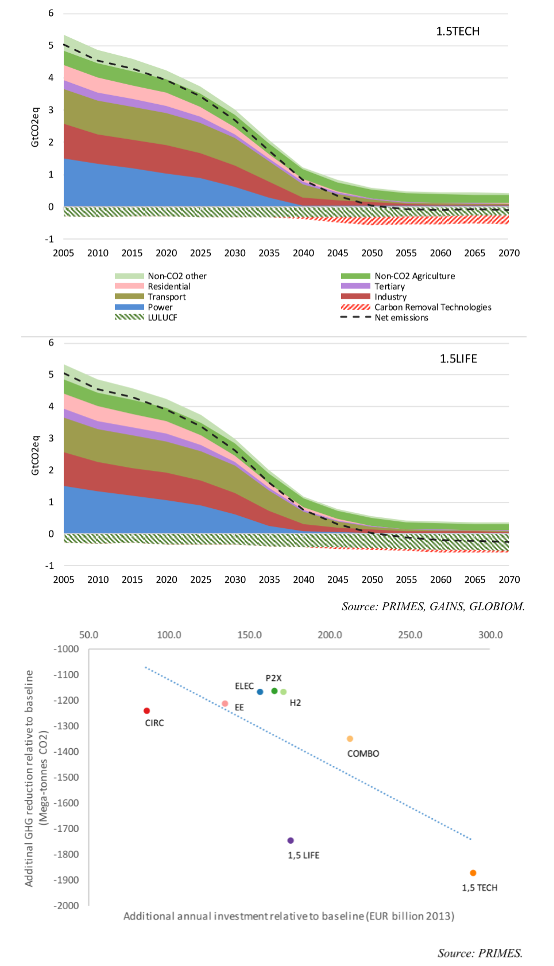
The Plan : an estimation of the costs
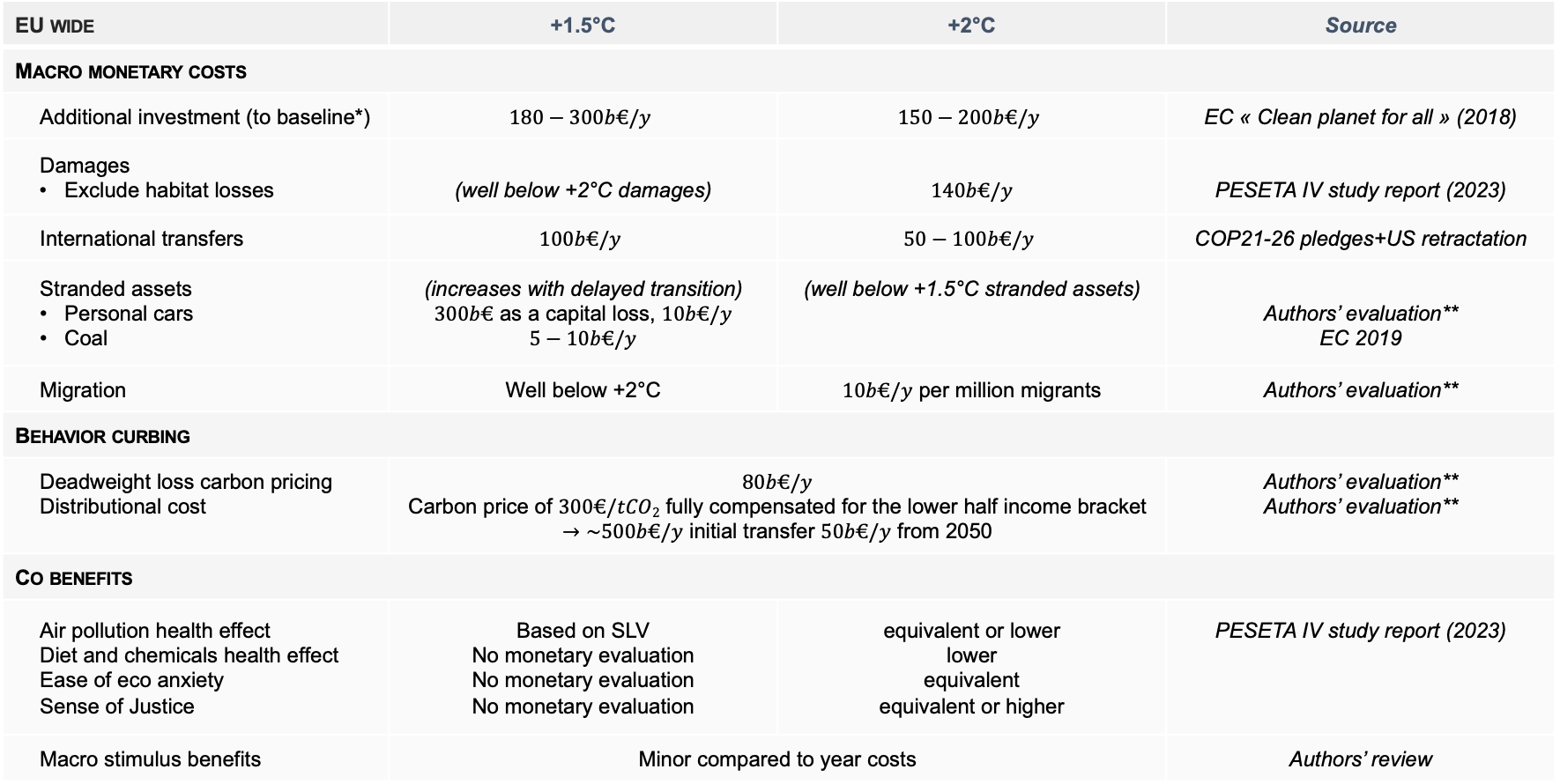
The importance of time
- The transition has to be achieved by 2050
- Acceleration in the next 25 years (to 2050) and then steady (for ever, neg. emissions)
- All techs are neither available nor scaled nor cost proven
- From electric/H2 cars, CCS or NET Failure is not an option,
- mistakes are inevitable: likely to push cost up
- resistance and shift in policies likely: the Green Deal is fragile
- Delays will translate in stranded assets value
- Increased cost
- Distributional issues
- 1.5LIFE+1.5TECH more likely to be necessary
- Sufficiency and technology alike
- Plus political consensus
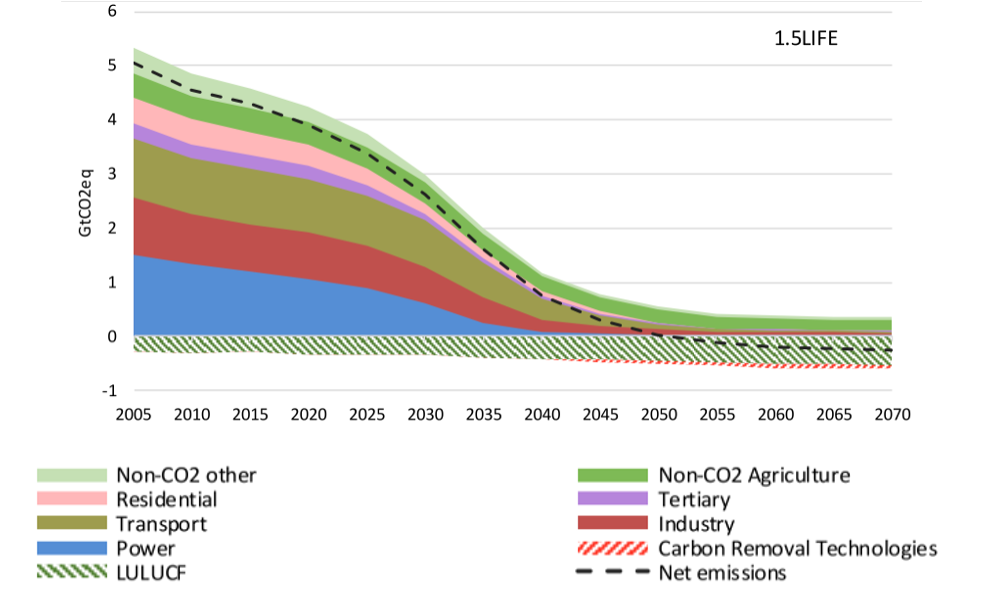
Costs likely underestimated, and a burden sharing issue
- Investment (public and private, mostly private)
- 180-300b€/y (1-1.5%GDP) for 1.5°C
- Other “macro” costs can add up to 450b€/y (2.5%GDP)
- Migration/Global south tranfers should be anticipated
- Delays and errors will add some (\(\times 2\) ?)
- Deadweight (micro) costs are not neglible
- Transfers could be important
- Cost/benefit analysis of the transition is undisputable
- However a temptation is to overinvest in adaptation (believing one can escape CC)
- tech alone will be unsufficient face the political problem
- Burden sharing is touchy
- 2 to 5% of GDP
- Benefits at the individual level are difficult to appreciate
- Very high sensitivity to justice – with own definition of justice
- Monetary compensation are not well accepted
- too little, too condescendant, too impredictable, not well targeted
The next steps are going to be critical
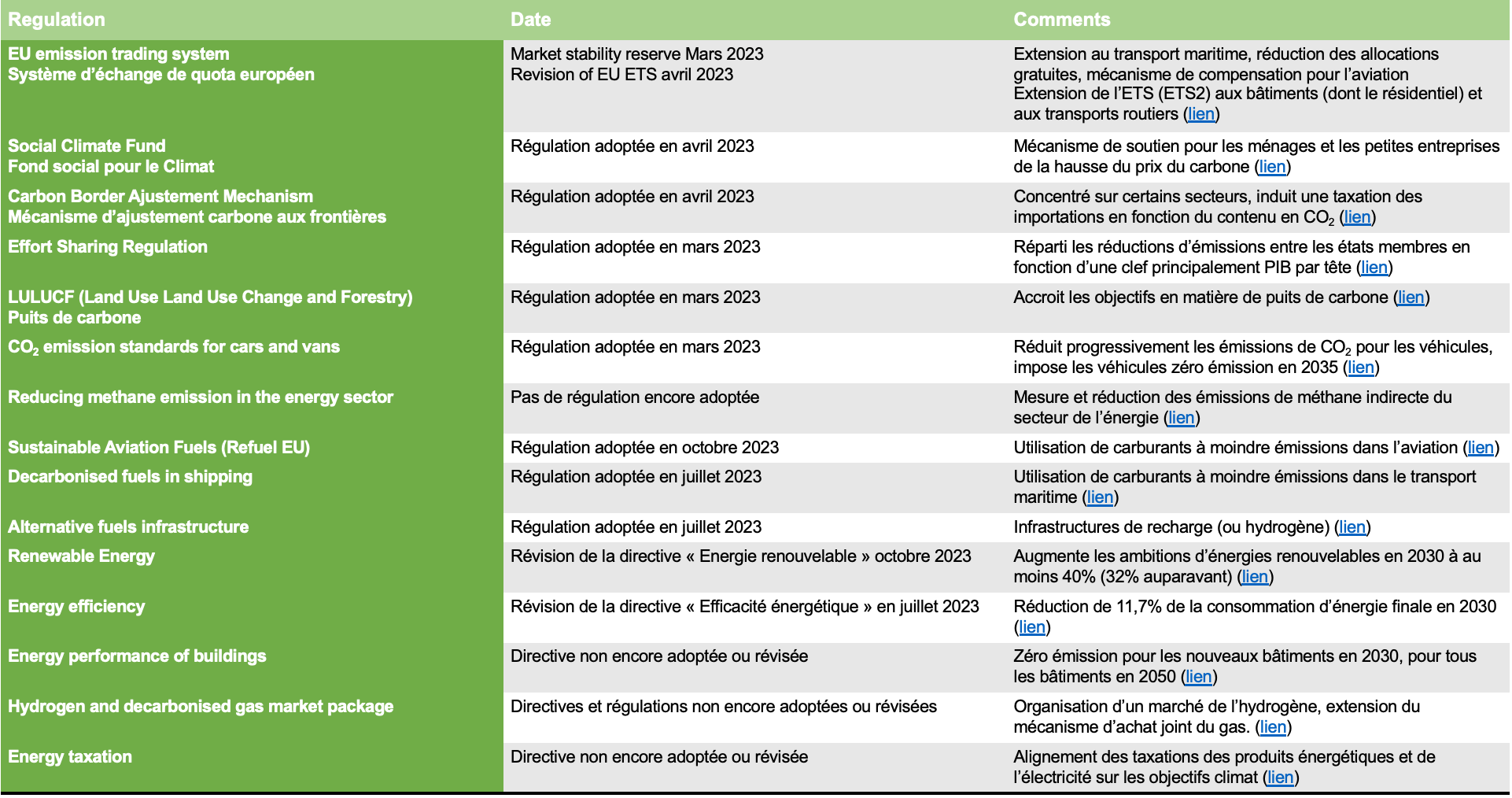
ETS2 is coming
Following the 2023 revision of the ETS directive, inside the Green Deal framework, the EU ETS is going to be extended :
Starting in 2024, boat and plane emsissions are under ETS, including non CO2 emissions
Extension to fuel combustion in buildings, road transport and small industry not covered by the existing EU ETS
Reporting and allowances provision will be done upstream (by suppliers)
After phasing in progressively, ETS2 is supposed to be fully implemented by 2027
EU ETS prior to 2023 is covering 38% of CO2 emissions, EU ETS2 could cover close to 75% (nearly doubling the coverage)
Under strong discussions because of the anticipation of social consequences and competitiveness issues
CBAM is limited in scope and will not insure fair pricing
Some complex mechanisms can provide delay or exception when the member state is already taxing carbon
Social funds are notably underprovisionned (20€/per capita/year)
Inflation Reduction Act (plus Trump) and China agressive subsidies put a lot of pressure on ETS, ETS2 and Green Deal. The new European Competitiveness Compass is softening the Green Deal strategy.
By the way, what’s the “right price” for CO2
The most outrageous graphic ever:
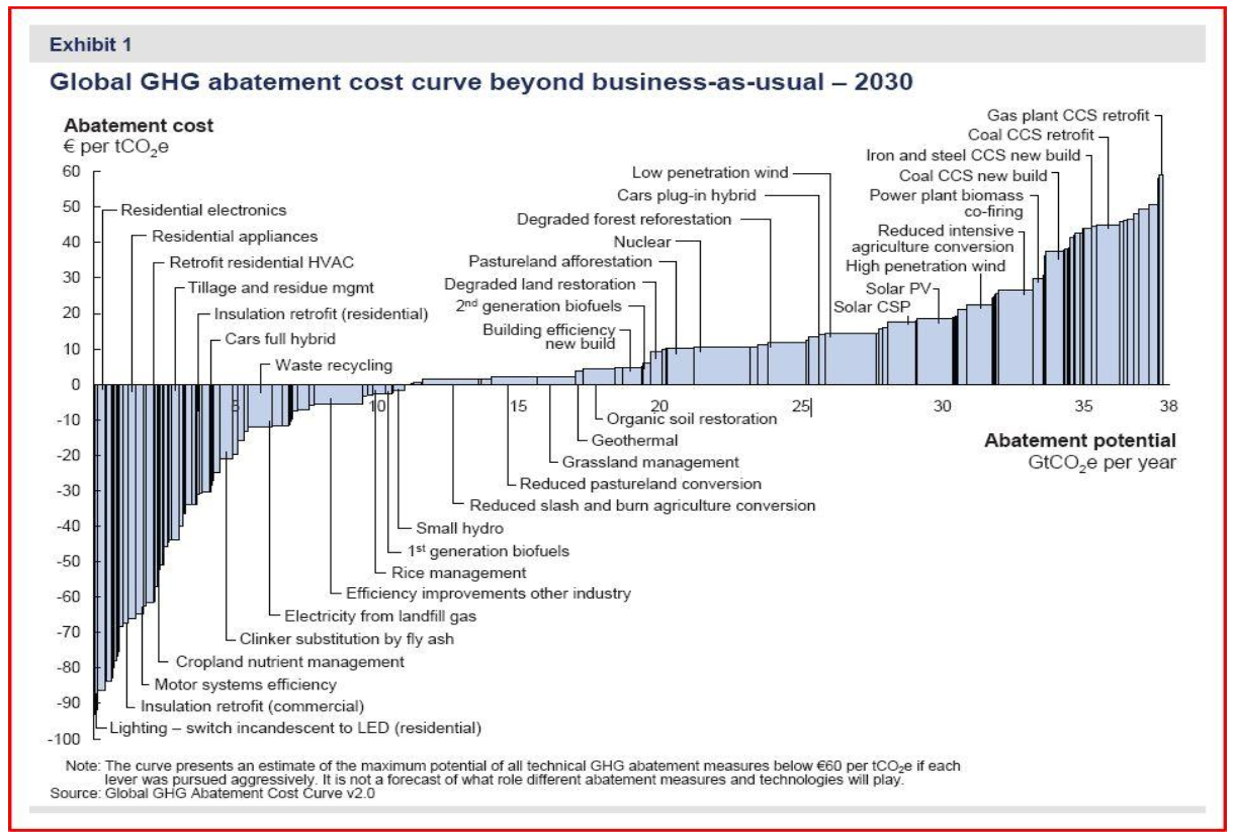
A recent work on cars (by P. Criqui)
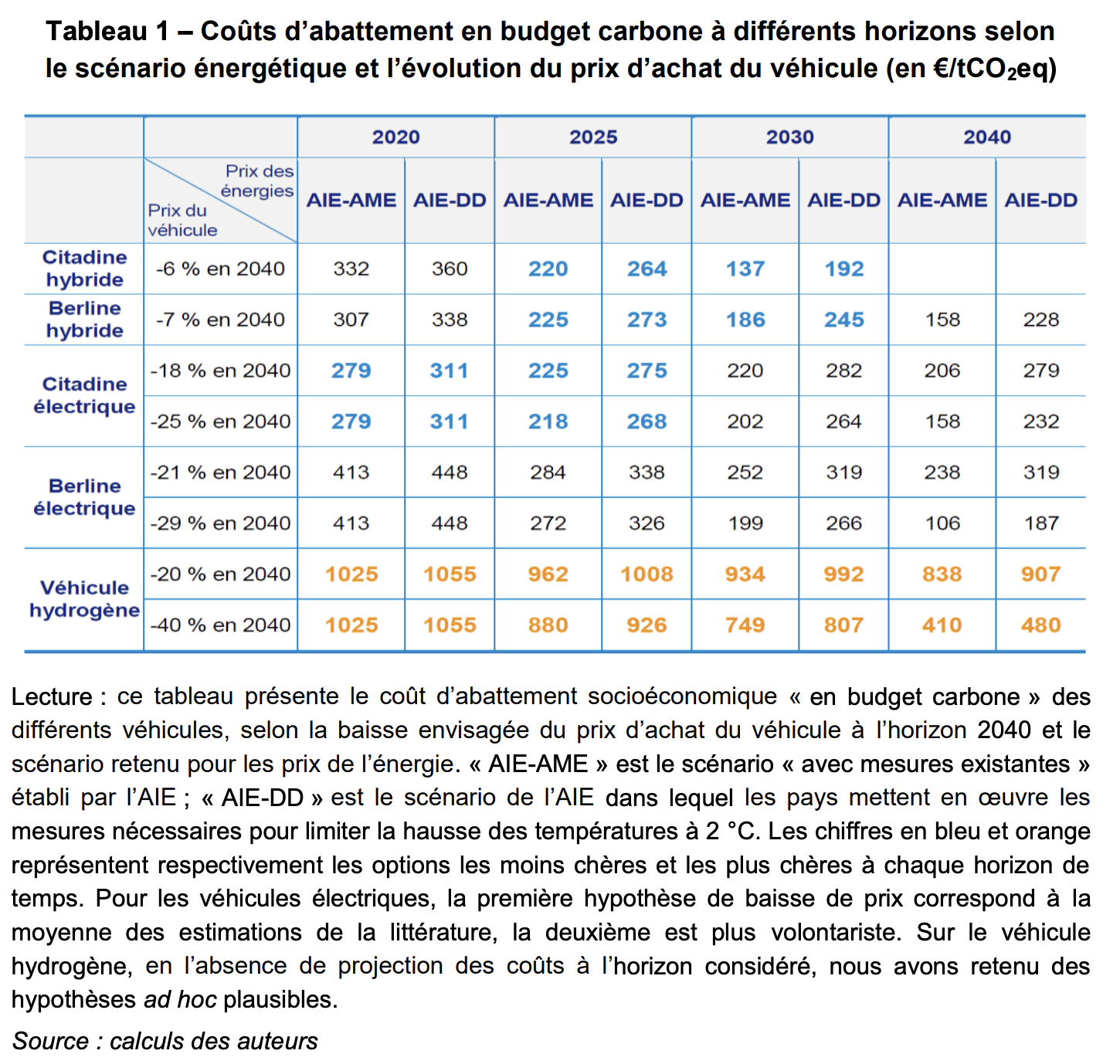

The European Green Deal EoE 2025: The Age of Constraints